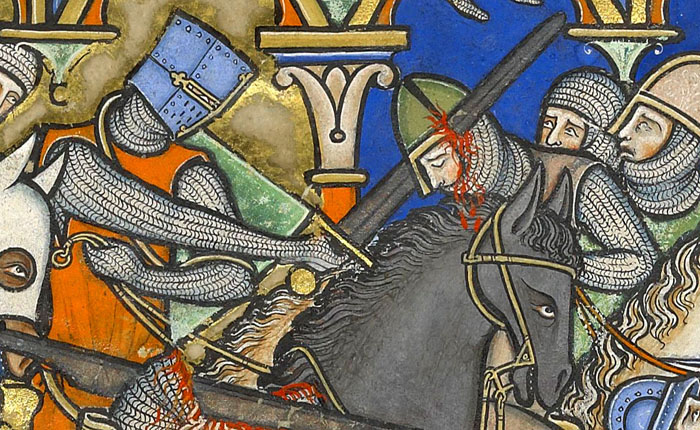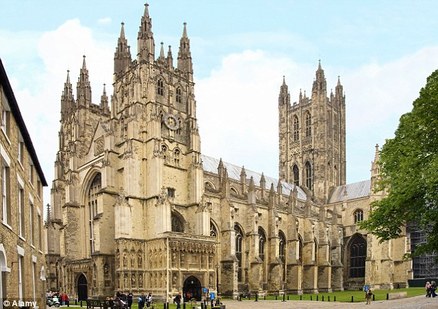Timeline of Classical Music
As I mentioned in the introduction, despite what most of us believe, classical music did not begin in the 17th century. In fact, its genesis can be found way, way back in time, halfway through the first millennium. Naturally, the music back then bore little if any similarity to the kind of sounds we would hear come out of Italy and Germany and France and Spain hundreds of years later, but it all links together, so this is how the timeline will run.
Early Music Period (500-1600)
Which is composed of
Ars antiqua (1170-1310)
Ars nova (1310-1377)
Ars subtilior (1360-1420)
Renaissance era (1400-1600)
Common-Practice Period (1600-1910)
Composed of
Baroque era (1600-1750)
Galant music era (1720-1770)
Classical era (1750-1820)
Romantic era (1800-1910)
Late 19th century to 20th and 21st centuries (1890- )
Composed of
Modernist era (1890-1975)
This is itself split into three distinct eras, with some overlap
Impressionism (1890-1925)
Expressionism (1900-1930)
Neoclassicism (1920-1950)
And then finally we have
Post-Modern era and Contemporary (1950 - )
With three more subdivisions, viz,
Experimental (1950 - )
Minimalism (1960-1990)
Post-minimalism (1980 - )
So that’s all nice and clear then. No? Not to worry; as I said, I won’t be sticking rigidly to this timeline at all, and it’s really more of a guide than anything else. Some of you may have spotted the line that reads “classical era” and thought well why not concentrate on just that? For the same reason, really, that if charting the history of heavy metal we wouldn’t start with Slayer or even Black Sabbath, or that the history of progressive rock goes back further than Genesis and Yes: this music had to come from somewhere, and if we ignore all the, if you will, grandparents and great-grandparents of the brilliant children who made classical music so accessible to all and so famous and enduring, we’d be doing both a disservice. I mean, the whole history of what many have called the greatest music in the world in a mere seventy years? Please.
I reiterate my belief that many of you may find what follows boring. I may find it boring. But I also repeat that it’s necessary, in order to appreciate classical music, to understand where it came from, how it came about. You wouldn’t read the ending of a mystery story without reading how all the clues were found, and fit into the puzzle, would you? You wouldn’t walk into a movie at the end? So too with classical, as with just about all music: to go forward you have to go back, to marvel at the man you must watch the infant crawl around, trying to find its feet. And other examples of this which I can't be bothered to think of. Basically, this is stuff you need to know, to read about, if you're serious about investigating the phenomenon of classical music.
So let’s do that now, and go right back to the very beginning. Not to ancient music - that is, music made before say 500 AD, as this bears little resemblance to what we know as classical music, or even, in some cases, music at all, but to that first faltering step which would lead to genius such as Tchaikovsly, Mozart and Beethoven.

Yes, it’s that jolly time spoken of by all in happy tones and fond memory, when the rule of a king was absolute and the people were there to pay taxes and fight in the army, with no other real function, and certainly no rights. A time of incredible disparity between the poor and the rich, the powerful and the powerless, the noble and the commoner. No, not like Trump’s America: who said that? Seriously!

Welcome, one and all, to the Middle Ages.
Where did you go to if you wanted to boogie on down to the latest cantatas, madrigals and motets during the twelfth and thirteenth century? In other words, where was pretty much the only place, outside of a palace or castle, where you could actually hear music? Right here.

Yup. That’s because just about all music written at this period was mostly vocal, and almost exclusively what they called liturgical (part of a mass) or sacred/spiritual, but either way you were going to be hearing about God, from people who worshipped and, in some ways, worked for him: monks, priests, nuns, all that lot. The general belief was that music was seen to come from God, a gift from the Almighty, and as the only ones who could write (never mind read) were the monks and clerics, it was they who wrote the first musical notations, creating the first examples of properly written-down music as opposed to music that was passed down via the oral tradition.
So while there were of course composers in this era, mostly they were composing the same sort of thing - hymns to God, praise this, praise that, chants and generally sucking up to the Big Guy, so their actual music is not of terribly much interest, unless that’s your thing. However, what they did, which composers that came after them, gaining much more fame than their musical forefathers, built on and relied on and based their most loved and respected compositions on, was lay down the foundations, the very building blocks of musical notation, a huge advance in both playing and composing music, as it allowed the singer/musician to see for the first time what he or she was supposed to be seeing or playing, rather than having to learn it by ear.
Perhaps the most important step was the development and implementation of polyphony. No, that’s not a Chinese parrot making a phone call - polyphony, from the Greek for poly (many) and phone (sound or noise) is literally what it sounds like, many voices. Merriam-Webster defines it as “a style of musical composition employing two or more simultaneous but relatively independent melodic lines”. What I think can be inferred from that is that harmonisation was possible, in a way it had not been prior to this.
Perhaps oddly, the Church, a massive power in the Medieval era and well into and beyond the Renaissance, seems to have been instrumental (sorry) in developing a system of written musical notation, primarily because of the need for people to learn liturgical music, or music for masses (as opposed to music for
the masses)

and as liturgical music was all chants, therefore vocal only, it was the expression of the voice which received the first attempts at musical notation. This was not easy. Rhythm, too, had to be displayed in a form understandable by a singer, so as to tell him or her how fast or slow to sing. This would later, of course, be used by musicians in order to determine the tempo of music, with several instructions such as “largo”, “pianissimo”, “forte” and so on explaining how loud, or softly, as well as how fast or slow the music should be played.